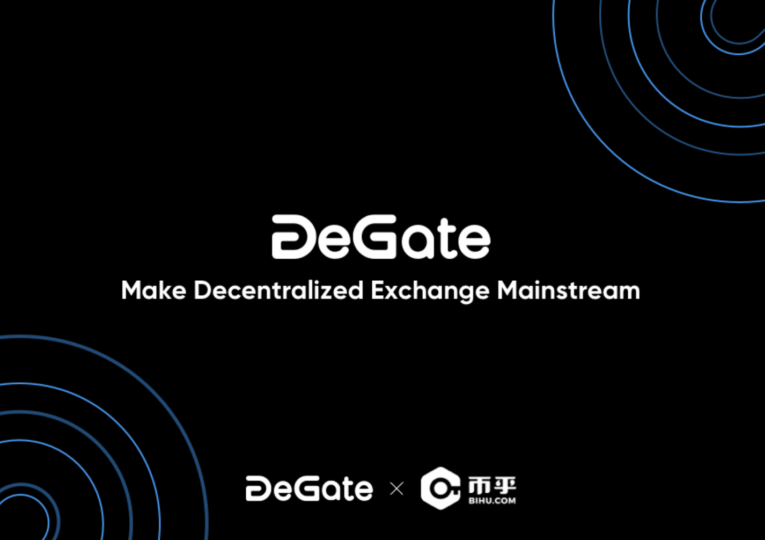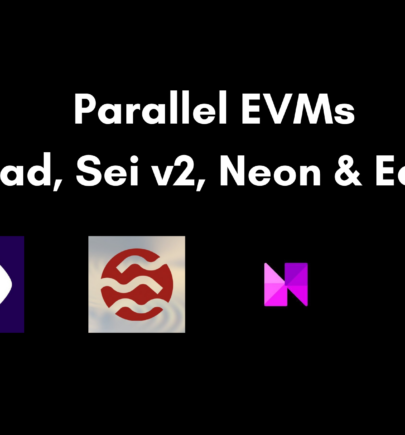DeGate x Bihu: What changes will EIP-1559 bring to Ethereum? Industry titans weigh in

DeGate x Bihu series: DeGate is proud to bring you DeGate X Bihu, a series of premium content from top content creators. Bihu.com is a premier crypto community with over 1 million users, creating deep analysis of the blockchain industry. In this fortnightly series, we bring you the very best articles from Bihu. Bihu was launched in 2018 by the same team behind DeGate.
This article is translated from the Chinese and published with the permission of the author ????. It was first published on 12 Mar 2021. The views expressed herein are those of the author and do not represent the views of DeGate. The views expressed are not to be taken as financial advice. We thank ???? for their kind sharing. We appreciate all the support from Bihu.com.
Recently, EIP-1559 has attracted much attention and sparked extensive discussion and controversy in the Ethereum community. EIP-1559 is an improvement proposal of Ethereum, which has a profound impact on miners and users. Vitalik Buterin has urged the progress of the proposal on different occasions personally. Today, let’s take a look at the proposal and the attitude and views of the key opinion leaders in the Ethereum community.
What is EIP
Before introducing EIP-1559, let’s look at what EIP is.
EIP is the abbreviation of Ethereum Improvement Proposal. Ethereum hopes to gather the wisdom of the technical community to determine the future direction of the Ethereum system, rather than leaving it in the hands of several core developers. Therefore, everyone gets to share their improvement proposals for Ethereum.
Before it is finally implemented and integrated into Ethereum system, EIP will go through the following stages:
Draft? EIP is in open discussion, with rapid iteration and changes in progress.
Review? the EIP author sends a clear signal that the EIP is ready for external review.
Last Call? the EIP done with its initial iteration and ready for review by a wide audience.
Final?If accepted, this EIP represents the final standard. A Final EIP exists in a state of finality and should only be updated to correct errata and add non-normative clarifications.
Diagram: EIP Creation Flow
EIP-1559 is one of the many Ethereum improvement proposals, which is still in the “review” stage at the moment.
All EIPs and their status can be found at the following link:
What is EIP-1559
The Ethereum network has been criticized for its low efficiency, and thus, its high cost.
EIP-1559 is a scheme that aims to improve the transaction system of Ethereum.
Currently, the transaction fee of the Ethereum network adopts the First Price Auctions mode, that is, the higher the user bids, the faster the time for the miner to take the lead in processing the transaction. As a result, users tend to, unconsciously, pay excessive mining fees because Ethereum’s users are all over the world and the transaction demand is changing rapidly.
We introduce the calculation formula of miner’s fee below:
Transaction Fee = Gas used x Gas Price
Users can set their own gas price according to the traffic of the Ethereum network and their own needs. However, the reality is that many users do not know the ideal price to set when they initiate transactions. Furthermore, the value of the gas price recommended by the wallets might lag behind because of the rapid change of the Ethereum network demand. Even in the same block, we can see that the difference between the highest bid and the lowest bid of the gas price given by the user is very large. Many users pay excessively for the transaction fee. On the other hand, some users have to wait for a long time before the transaction can be completed as bid a gas price that was too low.
In order to solve this problem, Vitalik Buterin, the founder of Ethereum, proposed EIP-1559. Buterin proposes to change the current transaction system of Ethereum to:
Basic fee + Tips
All transactions will be charged a base fee, which will be adjusted block by block. This part of the fee will be destroyed rather than awarded to the miners. Specifically, the current gas limit of Ethereum is 10 million, and the upward floating space is 10% to accommodate more transactions. This limit will be canceled in EIP-1559, and replaced by the long-term average target of 10 million and the hard upper limit of 20 million per block. When the actual block is less than the long-term average target of 10 million, the Base Fee will decrease with time, thus increasing the demand; When the actual block size is larger than the long-term average target, the Base Fee will increase with time, thus reducing the demand and finally achieving the ideal average block size.
Taking the initial value of 100 as an example, the blue area shows the situation that the basic cost may be achieved in the future block; Source: deribit
The Base Fee is automatically set by the system, and the amount is adjusted block by block. In addition, there are tips, which go directly to miners. When the network is not congested, that is, when the actual block is less than the long-term average target of 10 million, the user does not need to tip, and the transaction can be quickly processed; When the network is congested, the user needs to tip the miners to process the transaction as soon as possible. Because when the network is congested, the block of Ethereum will become larger to accommodate more transactions, and the probability of miners digging out uncle blocks will also increase. The tip is, therefore, equivalent to a compensation for the risk of digging out the uncle blocks.
Therefore, if EIP-1559 is implemented, the miner’s reward will become: Block Reward + Tip.
EIP-1559 has been officially included in the upgrade of Ethereum’s London hard fork, which is expected to be launched in July.
In addition, at least five other EIPs will also be included. Among them, EIP 3554, the “Difficulty Bomb Delay” is also included in this hard fork upgrade. This EIP encourages miners to switch to Ethereum 2.0. by raising the difficulty level of Ethereum’s Proof of Work puzzles. This would result in longer block times and effectively cut the rate of ETH rewards for miners. As the difficulty rises, this will eventually lead to something known as the ”Ethereum Ice Age”. This is when the Ethereum chain becomes so hard to mine that it becomes unattractive for miners to do so.
What is the Impact of EIP-1559 on Miners
At present, the income of Ethereum miners includes three sources:
1. Block rewards for each block 2 ETH and additional rewards for uncle blocks.
2. The user fee for entering the block space market through bidding, which is also known as the transaction fee.
3. Difficult to quantify, but highly valuable miners can be extracted by inserting (or not inserting) transactions at specific points in the block. This is known as Maximal Extractable Value (MeV), and most miners “outsource” it to leading arbitrage robots, which bid in the mempool.
By some accounts, after the launch of EIP-1559, miners will continue to get the same income from block subsidies and MEV, and the biggest change is the second part (that is, the income of processing user transactions). Some claim that the implementation of EIP-1559 will affect the income of miners by more than 50%, which is totally groundless. The actual impact on miners’ income can only seen when EIP-1559 is implemented (if it is implemented smoothly).
The Clash of the Industry Titans on EIP-1559
There are many disputes and different opinions surrounding EIP-1559. Both supporters and opponents have expressed their views on different occasions. For your reference, we have collected the views of some industry bigwigs from both sides.
On 28 February, Buterin shared his views on EIP-1559 in the live broadcast of Bihu:
EIP-1559 is very important to the Ethereum ecosystem and it could solve many problems of users. For example, it solves the problem regarding the amount of transaction fee that users need to bid. If you want the transaction to be processed quickly, you need to pay a high transaction fee. If you choose a lower transaction fee, you may need to wait for an uncertain and long time before it could be processed. EIP-1559 is here to solve such problems.
EIP-1559 has many other benefits as well. One of the advantages that people often mention is that most of the transaction fees will be destroyed. In this case, if the total transaction cost of Ethereum is more than the inflation rate, the total amount of ETH will be reduced, and the Ethereum economic model will become more sustainable.
Many people criticize Ethereum, saying that Bitcoin has a total cap of 21 million while Ethereum has no upper limit. Therefore, people think ETH is unstable. If there are more transactions after the implementation of EIP-1559, it is possible that the total number of ETH will decrease or only increase by a small extent. The change of this economic model is something many people are looking forward to.
Due to its novel economic mechanism, many were worried about the risks of EIP-1559 in 2020. However, we have done much research in the last year, including our research, the game theory research report of American Professor Tim Roughgarden, and EPR-1559 of Filecoin. The results have proven positive. Thus, in our view risk of EIP-1559 is significantly lower than imagined.
Many Ethereum mine pools are opposed to EIP-1559. However, Shixing Mao, the founder of F2pool, supports EIP-1559. In the live broadcast of Huoxing24 on March 5, Mao said:
The current Ethereum ecosystem has a fatal problem, especially from the perspective of native users who use all kinds of DeFi products on the platform. That is to say, each transaction sent out is uncertain, and we don’t know whether the current speculation assessment of the future network gas fee will change dramatically.
In order to promote the faster confirmation of the transaction, many users will offer a gas fee higher than the current average. But the transaction is still not confirmed as the network can dramatically during just a short period of time. I believe a lot of friends who use DeFi protocols will encounter the problem of needing to keep accelerating a deal with more gas.
On Ethereum, the experience is not great. It may take hours to wait for confirmation of a few transactions. Because transactions are sequential. This inhibits the rapid development of the DeFi ecosystem. This is also the reason why many users have to move to other public chains. EIP-1559 essentially changes the experience of high-frequency users.
Secondly, 1559 changed the monetary policy of Ethereum. In the past, Ethereum had no upper limit and had long-term inflation. Compared with the constant amount of bitcoin, which leads to the gradual reduction of inflation in the future, people’s expectation of the price under the long-term inflation model of Ethereum will be lower. Therefore, to a certain extent, destroying the base fees paid, especially when the network is congested, will enable the Ethereum public chain to capture the true value of its ecosystem.
Furthermore, 1559 will charge a Base Fee, which may change the arrangement of transactions on Ethereum. Currently, there are 1 million transactions on Ethereum every day, which will basically exhaust the resources on Ethereum. Out of which, there may be more than 100,000 arbitrage transactions. Other than producing economic benefits to the sender of the transaction, there is no high value and it is wasting the resources on the chain. At present, the resources on the chain are particularly valuable. After the implementation of 1559, arbitrage with specific behavior standards is difficult to carry out, which can greatly reduce the wasteful use of resources.
Based on the above analysis, this proposal should be supported from the perspective of looking at the ecological development of Ethereum from a long-term perspective, so that Ethereum can obtain application value from ecological development. It should not be seen from a short-term perspective.
In addition, Jihan Wu, chairman of Bitdeer, expressed his support for EIP-1559 in the BCH swarm, making it clear that if the proposal passes smoothly, ETH prices will rise sharply and miners could gain benefits from it too.
There are also many people who oppose EIP-1559.
A Jian, the chief editor of EthFans, has repeatedly written against EIP-1559. The following is his statement on EIP-1559 in the live broadcast of Huoxing24 on March 5:
First of all, it really changes the processes and experiences when users send transactions. I don’t think it’s an essential improvement.
Secondly, it changes the situation of consensus providers, so it also fundamentally changes the security of Ethereum. I think the misunderstanding is that EIP-1559 is only related to miners. If we continue to use this mechanism in the era of Ethereum 2.0, it is also a deprivation of the verifier’s income. The proposal has changed the situation of consensus providers.
Finally, it will have an impact on Ethereum’s monetary policy.
Speaking about EIP-1559, Daniel Lu, co-founder of the Nervos Foundation, expressed doubts about the necessity of introducing the improved agreement, but also expressed optimism that the final dispute will be gradually resolved in the future:
“ Although I’m the co-founder of the project, my view on this issue does not represent the view of Nervos, it’s just my personal view. When it comes to EIP-1559, my personal attitude is neutral, but I have reservations.
With EIP-1559, the problem that needs to be solved is, indeed, a problem. But I doubt whether we can really solve the problem. I don’t think EIP-1559 can effectively solve the problems it hopes to solve. Meanwhile, it introduces a new problem. It hopes that users will have a better experience in sending transactions and paying transaction fees, but it may not be able to solve the problem well. At the same time, it introduces deflation to the whole system. Whether deflation needs to be introduced through EIP-1559 is a big question.
When the ecology and application of Ethereum come into play, we should focus on the expansion of the Ethereum network instead of trying to solve the problem of high transaction fees caused by network congestion via adjustment of the transaction fee structure.
I have been in touch with the Ethereum community since 2016, and experienced the Dao bifurcation, which is also the biggest bifurcation in the history of Ethereum, and the most violent one that led to the fork out into the two chains, namely ETH and ETC. Looking at EIP-1559 today, I don’t think it will bring more controversy than the DAO incident. The bifurcation of the community discussion was from the core team to the whole user, to the developers, to the miners. Everyone was discussing and paying close attention to it. In my opinion, today’s discussion of EIP-1559 is more about the media news and a small number of people who are interested. We are all bystanders, looking forward to the results.
Now, it’s true that, for example, there might be a different view from the mine pool. But on the user side, the developer of DeFi, the project side, and the core team, it seems that they have reached a relative consensus. There is still a long way to go before the completion of 1559, thus leaving there are still possibilities between the differences of the ecological end and the pool end. The argument is not so intense and we still have time. The DAO incident only gave us about a month to decide whether to fork out or not. Now that the scope of EIP-1559 dispute is not so large, I am optimistic that the final dispute will be gradually resolved in the future.
At present, many Ethereum mine pools are against EIP-1559. Twitter user @ Red Panda Mining tweeted on 8 March, calling on Ether miners to hold a 51 hour demonstration of computing power on April 1, transferring computing power to Ethermine, a mine pool against 1559. Of course, this is obviously showing the outside world that the computing power of these opposing miners may exceed 51% of the current Ethereum network computing power.
Previously, as miners were determined to oppose EIP-1559, there were concerns that Ethereum might encounter a hard split. In a live stream on 9 March, Bits Be Trippin, a famous Youtuber, said the proposal was just a good-natured demonstration of computing power and denied that miners would launch any computing power attack.
Summary
EIP-1559 adopts the mode of “Base Fee + Tip”, and the base fee is completely destroyed, which will have a great impact on users, miners, and Ethereum itself. Therefore, EIP-1559 has caused great discussion and controversy in the Ethereum community.
The proposal has now been officially included in the Ethereum “London” hard fork upgrade expected in July this year. The main opponents of EIP-1559 are miners. According to statistics, the total computing power against the proposal is more than 60% of that of Ethereum. At present, there are many uncertain factors, such as whether EIP-1559 can advance smoothly, whether miners will launch computing attacks, whether ETH will fork out a new chain, and etc. The authors will continue to pay close attention to the progress of EIP-1559 and the development of Ethereum.
Reminder: the views listed in this article do not represent the views or positions of the authors, nor do they constitute any investment opinions or suggestions.












